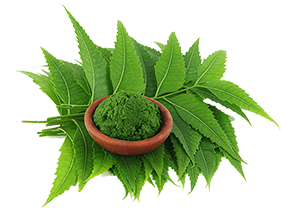Learn Ayurveda
Concepts of Ayurveda
 History / Origin
History / Origin
Ayurveda in Sanskrit means ‘the Science of Life. This holistic system of medicine prevalent in Asia, is believed to have evolved from divine sources and practiced by sages in India over 3000-5000 years ago. Ayurveda views humans as a complex whole, including their external/ internal environment and derives its practice from universal laws of nature.
Ayurveda theory describes the human being as a triune of body, mind and spirit which are interrelated and interdependent. The whole universe is represented in this theory as macrocosm and man as microcosm or a minute model of universe.
Principles
Ayurveda describes three principle universal energies which regulate all natural processes and produces effects in the various galaxies and solar systems operating at the level of human physiology.
Ayurveda recognizes that ultimately all intelligence and wisdom flows from one absolute source of nature and manifests itself in our health through the law of nature.
Ayurveda medicine complements nature and a lifestyle close to nature by promoting harmony between the individual and nature for a balanced lifestyle according to nature’s laws.
Rather than focusing on individual symptoms of a disease ayurveda treatment focuses on establishing and maintaining the balance of the life energies in human beings.
Recognising the unique constitutional differences of each individual, Ayurveda medicine prescribes different treatments and therapies for each individual.
Ayurveda seeks to heal the fragmentation and disorder of the mind-body complex and restore wholeness and harmony, through preserving the alliance of the mind and body that offers sustainable cure for diseases.
The Tri Gunas
The three gunas - Satva, Rajas and Tamas are the three essential components, attributes or energies of the mind. Ayurveda provides a distinct description of people based on their Manasa (psychological) Prakriti (constitution). Genetically determined, these psychological characteristics are dependent on the relative dominance of the three gunas and their manifestations.
 The PancaMahabhutas
The PancaMahabhutas
According to Ayurveda, everything in the Universe is composed of the Pancamahabhutas – Akasa Space), Vayu (Air), Teja or Agni (Fire), Jala (Water) and Prithvi (Earth). Omnipresent, they are mixed in an infinite variety of relative proportions such that each form of matter is distinctly unique. Although each element has a range of attributes, only some get evident in particular situations. Constantly changing and interacting with each other, they create a situation of dynamic flux that keeps the world going.
Ayurveda clearly states that only a balanced condition of dosas, dhatus and malas is arogya (good health or disease free condition) and their imbalance is the cause of ill health or disease.
The Tri Dosas
Ayurveda believes five basic elements Pancamahabhutas (space, air, fire, water and earth) manifest in the human body as three basic humours known astridosas (Vata, Pitta and Kapha). These three govern creation, maintenance and destruction of bodily tissues as well as the assimilation and elimination.
Vata, Pitta and Kapha are the name of tridosas –Vata (air), Pitta (bile) and Kapha (Phlegm). Dosas are basically three different forms of energy.
The Tridosas (tri meaning three and dosas being the basic physical energies) are the primary and essential factors of the human body that govern our entire physical structure and function. Derived from the Pancamahabhutas, each dosa which like the elements cannot be detected with our senses, only their qualities can be discerned – is a combination of any two of the five bhutas with the predominance of one. Called Vata, Pitta and Kapha in Sanskrit, these three are responsible for all the physiological and psychological processes within the body and mind – dynamic forces that determine growth and decay. Every physical characteristic, mental capacity and the emotion of a human being can therefore be explained in terms of the tridosas.
Most of the physical phenomena ascribed to the nervous system by modern physiology for example, can be identified with Vata. Just as the entire chemical process operating in the human body can be attributed to Pitta, including enzymes, hormones and the complete nutritional system. And the activities of the skeletal and the anabolic system, actually the entire physical volume of an organism, can be considered as Kapha.
Each person is born with an unique combination of these dosas which decides their basic constitution called Prakruti. Understanding of each person's Prakruti to decide on their personal diet and exercise pattern, supplements and medicinal herbs, cleansing and rebuilding therapies suitable for them are among the chief methods, ayurveda employs for the maintenance and restoration of health.
The SaptaDhatus
Nourishment of these seven body tissues takes place in sequential manner with original material provided by digested food.
Rasa provides contentment and saturation and nourishes blood, which generates clarity in complexion, nourish muscles and sustains life; muscles strengthen the body and nourishes medas ( fat); medas give rise to unctuous materials, sweat and firmness and nourishes asthi (bones), asthi supports the body and nourishes marrow. It provides function, strength, nourishes semen and fills up bones; semen provides valour, discharge, pleasure, physical strength, exhilaration and is meant for reproduction of seed.
The Sapta (seven) Dhatus (tissues) elements form the pillars or biophysical format of the body that form the means of nourishment and growth while providing support to the body and mind.
Rasa (fluid) Dhatu - Derived from the digested food, it nourishes the body’s tissues and cells and is analogous to the plasma.
Rakta (blood) Dhatu - Regarded as the basis of life, it is analogous to the circulating blood cells. It not only nourishes the body tissues, but provides physical strength and colour to the body.
Mamsa Dhatu - The muscle tissue, whose main function is to provide physical strength and support for the medadhatu.
Meda (fat) Dhatu - Consists of adipose tissue providing support to asthidhatu.It also lubricates the body.
AsthiDhatu - Comprising bone tissue, including cartilage, its main function is to nourish the majjadhatu and provide support to the mamsadhatu.
MajjaDhatu - Denoting the yellow and red bone marrow tissue, its main function is to fill up the asthi and to oleate the body.
ShukraDhatu - The main aim of this reproductive tissue is to help reproduction and strengthen the body.
Since the dhatus support and derive energy from each other, an affected dhatu impacts others. For instance, interference in the manufacture of the plasma affects the quality of the blood, which in turn affects muscle. Each tissue type has its own agni, which determines metabolic changes in the tissues and forms by-products, which are either used in the body or excreted. Menstrual periods for example are a by-product of rasa. The tissues are also governed by the three dosas, and any imbalance in them also causes imbalances in dhatus. Heavy periods therefore can also be caused by the effects of the excess of Kapha on plasma.
The Trayodosa Agni

Agni, the biological fire that governs metabolism encompasses all changes in the body and mind including the digestion and absorption of food, cellular transformations, assimilation of sensory perceptions and mental and emotional experiences. Agni therefore covers a whole sequences of chemical interactions and changes in the body and mind.
Agni stimulates digestion and digestive capacity is related to the strength of agni. Agni is present in every tissue and cell and is necessary to maintain the nutrition and auto-immune mechanism.
A balanced agni therefore is vital for health and the disturbances of Agni are usually the chief causes of diseases. The ability to resist disease and also its physical strength are directly related to its heat energy determining the metabolic processes of the body.
Ayurveda identifies thirteen types of Agni in the body. The most important of them is the Jatharagn. This gastric fire is responsible for digestion of food consumed by correlating gastric juice in the stomach and the digestive enzymes and juices secreted into the stomach, duodenum and the small intestines. If digestive agni is low and the capacity is impaired, one may experience pain, discomfort, feeling of heaviness or gases gurgling, constipation or loose stools.
Other types of Agni consist of SaptaDhatvagni and PanchaBhutagni which maintain the metabolic functions at tissue and cellular level.
The Tri Malas
Ayurveda clearly states that only a balanced condition of dosas, dhatus and malas is arogya (good health or disease free condition) and their imbalance is the cause of ill health or disease. Malas are the various waste products of food and the dhatus produced during the normal digestive and metabolic process, the three major malas being Purisa(faeces), Mutra (urine) and Sveda (sweat). The tridosas must be in proper functional state to ensure normal evacuation of waste products and also if malas are not formed in normal composition it may produce disorder in body.
Purisa is the waste left back after nutrients of digested food have been absorbed in the small intestine. While water and salt are absorbed in the large intestine, the residue now converted into solid faeces, leaves the body. The consistency of the faeces depends both on gastrointestinal mobility and type of diet.
Mutra is formed during the course of biological processes within the human body and the entire urinary system is activated in the formation and elimination of urine, regulating the fluid balance in our body and also maintaining blood pressure. Any imbalance of state of urinary system may result in disorders like kidney stones, urinary infections, cystitis, abdominal pain and bladder disorders.
Sveda occurs as a waste product during the synthesis of medadhatu (fatty tissue) and is eliminated through skin pores which controls body temperature and helps to regulate the electrolytic balance. It is essential that normal formation and flow of sweat takes place as otherwise it may lead to skin infections, itching, burning sensation, loss of fluid balance and reduced body temperature.






